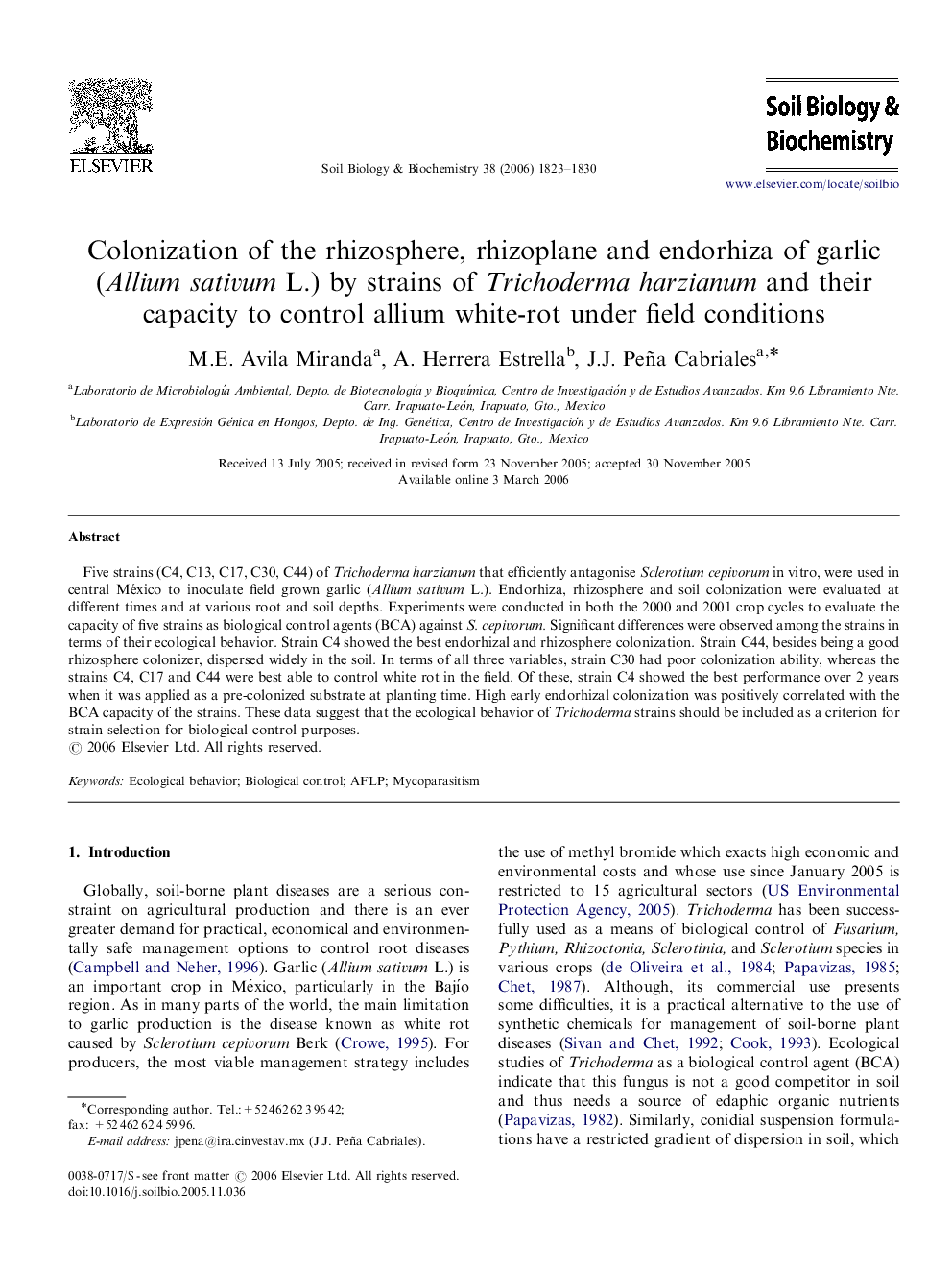| Article ID | Journal | Published Year | Pages | File Type |
|---|---|---|---|---|
| 2026585 | Soil Biology and Biochemistry | 2006 | 8 Pages |
Five strains (C4, C13, C17, C30, C44) of Trichoderma harzianum that efficiently antagonise Sclerotium cepivorum in vitro, were used in central México to inoculate field grown garlic (Allium sativum L.). Endorhiza, rhizosphere and soil colonization were evaluated at different times and at various root and soil depths. Experiments were conducted in both the 2000 and 2001 crop cycles to evaluate the capacity of five strains as biological control agents (BCA) against S. cepivorum. Significant differences were observed among the strains in terms of their ecological behavior. Strain C4 showed the best endorhizal and rhizosphere colonization. Strain C44, besides being a good rhizosphere colonizer, dispersed widely in the soil. In terms of all three variables, strain C30 had poor colonization ability, whereas the strains C4, C17 and C44 were best able to control white rot in the field. Of these, strain C4 showed the best performance over 2 years when it was applied as a pre-colonized substrate at planting time. High early endorhizal colonization was positively correlated with the BCA capacity of the strains. These data suggest that the ecological behavior of Trichoderma strains should be included as a criterion for strain selection for biological control purposes.
